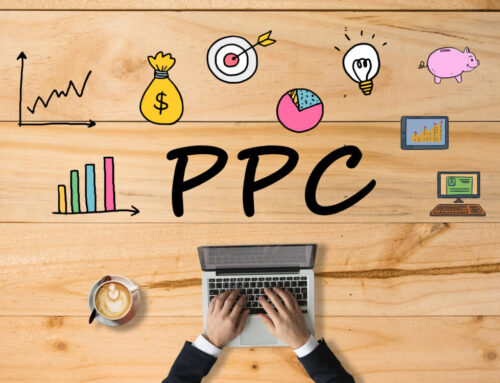One of the key advantages of Google Click Ads is its powerful keyword targeting capabilities. Advertisers can choose specific keywords related to their business or industry and create ads that will appear when users search for those keywords
Introduction
In today’s digital age, online advertising plays a crucial role in the success of businesses. One of the most effective and widely used methods of online advertising is Google Click Ads. With its unparalleled reach, targeting capabilities, and measurable results, Google Click Ads has revolutionized the way businesses promote their products and services online. In this blog post, we will explore the world of Google Click Ads and understand how they can help businesses drive traffic, increase conversions, and maximize their return on investment.
Understanding Google Click Ads
Google Click Ads, also known as Google Ads or Google AdWords, is an advertising platform developed by Google. It allows businesses to create and display ads on Google’s search engine results pages, as well as on partner websites within Google’s advertising network. The main concept behind Google Click Ads is the pay-per-click (PPC) model, where advertisers only pay when someone clicks on their ads.
It allows businesses and advertisers to create and display ads on Google’s search engine results pages (SERPs) and partner websites. The primary goal of Google Click Ads is to generate clicks and drive traffic to a specific website or landing page.
Here’s a step-by-step breakdown of how Google Click Ads work:
1. Advertiser sets up a campaign: The advertiser creates an account on Google Ads and sets up a campaign. This involves defining the campaign objectives, budget, targeting options, and ad formats.
2. Keyword research and selection: Advertisers research and select relevant keywords that are related to their business, products, or services. These keywords are what users will search for on Google when the ads are triggered.
3. Ad creation: Advertisers create compelling ads that consist of a headline, description, and display URL. They can also include ad extensions, such as call buttons or additional links, to enhance their ad’s visibility and appeal.
4. Bid management: Advertisers specify the maximum amount they are willing to pay for each click on their ads. This is known as the cost-per-click (CPC) bid. Advertisers can set different bids for different keywords or use automated bidding strategies provided by Google Ads.
5. Ad auction and placement: When a user performs a search on Google using relevant keywords, an ad auction takes place. Google’s algorithm determines which ads to display based on factors such as bid amount, ad quality, and expected click-through rate (CTR). The ads are then shown on the search results page or relevant websites within the Google Display Network.
6. User clicks on the ad: If a user finds an ad relevant and appealing, they can click on it to visit the advertiser’s website or landing page. Clicking on the ad leads to a charge to the advertiser’s account based on the CPC bid.
7. Conversion tracking and optimization: Advertisers can track the performance of their ads and measure the conversions, such as purchases, form submissions, or sign-ups, that result from the clicks. This data helps advertisers optimize their campaigns, adjust bids, refine targeting, and improve ad copy to maximize their return on investment (ROI).
It’s important to note that Google Click Ads operate on a pay-per-click (PPC) model, where advertisers only pay when someone clicks on their ads. The cost per click can vary depending on factors like keyword competitiveness, ad quality, and targeting options.
Google Click Ads can be a highly effective marketing tool for businesses to reach their target audience, drive traffic to their websites, and increase conversions. However, achieving optimal results often requires continuous monitoring, testing, and refinement of campaigns to improve performance and ROI.
Keyword Targeting: Reaching the Right Audience
One of the key advantages of Google Click Ads is its powerful keyword targeting capabilities. Advertisers can choose specific keywords related to their business or industry and create ads that will appear when users search for those keywords. This ensures that your ads are shown to a relevant and highly targeted audience, increasing the likelihood of attracting potential customers who are actively seeking the products or services you offer.
Keyword targeting is a strategy used in online advertising to reach the right audience by displaying ads to users who are searching for or engaging with specific keywords. It involves selecting relevant keywords that align with your advertising goals and targeting those keywords in your ad campaign.
Here are some key steps to effectively reach the right audience through keyword targeting:
1. Define your target audience: Start by clearly defining the demographics, interests, and behaviors of your target audience. Understand who they are, what they are interested in, and how they search for information online.
2. Conduct keyword research: Use keyword research tools to identify keywords that are relevant to your product, service, or content. Look for keywords that are frequently searched for by your target audience and align with your advertising goals.
3. Select appropriate keyword match types: Most advertising platforms offer different keyword match types, such as broad match, phrase match, and exact match. Each match type determines how closely a user’s search query must match your selected keywords for your ads to be shown. Choose match types based on your advertising goals and the level of specificity you require.
4. Create targeted ad campaigns: Build ad campaigns around specific keywords or keyword themes. Develop compelling ad copy and landing pages that align with the keywords you are targeting. This helps ensure that your ads are relevant to users’ search queries, increasing the chances of engagement and conversions.
5. Monitor and optimize your campaigns: Continuously monitor the performance of your keyword-targeted campaigns. Analyze metrics like click-through rates (CTRs), conversion rates, and return on investment (ROI). Identify keywords that are driving results and allocate more budget or optimize your bidding strategy accordingly. Similarly, identify underperforming keywords and consider pausing or refining your targeting for those keywords.
6. Refine your keyword targeting over time: As you gather more data and insights from your campaigns, refine your keyword targeting strategy. Adjust your keyword selection, match types, and bidding strategies based on performance data and user behavior patterns. This iterative process allows you to optimize your campaigns for better audience targeting and ROI.
7. Consider negative keywords: Negative keywords are terms that you don’t want your ads to appear for. By specifying negative keywords, you can exclude irrelevant searches and refine your targeting further. This helps ensure that your ads are displayed to the most relevant audience and avoids wasting ad spend on irrelevant clicks.
Remember that effective keyword targeting is a continuous process of refinement and optimization. Regularly review your campaigns, test different strategies, and adapt to changes in user behavior and market trends to reach the right audience effectively.
Ad Rank and Quality Score: Maximizing Visibility
To determine the position and visibility of ads on search engine results pages, Google uses a combination of factors, including the ad’s bid, quality score, and expected click-through rate. Advertisers bid on keywords, indicating the maximum amount they are willing to pay for a click. However, the bid alone does not guarantee a top position. Google also takes into account the quality score, which is based on factors such as the relevance and quality of the ad, the landing page experience, and the historical performance of the ad account.
When it comes to maximizing visibility in online advertising, two key factors to consider are Ad Rank and Quality Score. Ad Rank determines the position of your ad on search engine results pages (SERPs) or other advertising platforms, while Quality Score assesses the quality and relevance of your ad.
Here’s how you can optimize these factors to improve your ad visibility:
1. Ad Rank Optimization:
a. Bid Strategically: Increase your bids for keywords that are highly relevant and likely to generate conversions. This helps improve your Ad Rank and increases the chances of your ad appearing in a prominent position.
b. Ad Extensions: Utilize ad extensions like sitelinks, call extensions, and structured snippets to provide additional information and enhance the visibility and appeal of your ads.
c. Ad Relevance: Craft highly relevant ad copy that aligns with your target keywords and landing page. This increases the likelihood of a higher Ad Rank.
d. Landing Page Experience: Ensure your landing page is user-friendly, loads quickly, and provides valuable and relevant content. A positive landing page experience can improve your Ad Rank.
2. Quality Score Optimization:
a. Keyword Relevance: Ensure your keywords are tightly aligned with your ad copy and landing page content. Irrelevant or generic keywords can lower your Quality Score.
b. Ad Copy Optimization: Write compelling and relevant ad copy that includes your target keywords. This helps improve your click-through rate (CTR), a factor considered in Quality Score.
c. Landing Page Quality: Make sure your landing page provides a seamless user experience, is relevant to the ad, and offers valuable content. Fast loading times, clear navigation, and mobile optimization contribute to a higher Quality Score.
d. Historical Performance: Consistently monitor and optimize your campaigns to improve their historical performance. Higher CTRs and conversion rates over time can positively impact your Quality Score.
Remember that Ad Rank and Quality Score are interrelated. A higher Quality Score can lead to a better Ad Rank, which in turn increases your ad’s visibility. Regularly monitor your ad campaigns, test different strategies, and make data-driven optimizations to maximize your visibility and improve your advertising performance.
Ad Extensions: Enhancing Advertisements
Google Click Ads offers various ad extensions that allow advertisers to enhance their ads with additional information, providing more value and visibility to potential customers. These extensions include sitelinks, call extensions, location extensions, and more. By utilizing ad extensions, businesses can provide users with more relevant information and increase the chances of clicks and conversions.
Ad extensions are powerful tools that allow advertisers to enhance their advertisements by providing additional information and functionality to their audience. These extensions can improve ad visibility, increase click-through rates, and deliver more relevant information to potential customers. Here are some commonly used ad extensions:
1. Sitelink Extensions: Sitelinks allow advertisers to add additional links to specific pages on their website. This extension enables users to navigate directly to the most relevant pages, improving user experience and providing more opportunities for conversion.
2. Call Extensions: Call extensions add a phone number to the ad, making it easier for users to directly call the business. This extension is particularly useful for businesses that rely on phone calls for generating leads or providing customer support.
3. Location Extensions: Location extensions display the business address alongside the ad. This extension is helpful for brick-and-mortar businesses as it helps users find the nearest physical location.
4. Callout Extensions: Callout extensions allow advertisers to include additional text snippets to highlight key features, benefits, or offers. These snippets can be used to emphasize free shipping, 24/7 customer support, price matching, or any other unique selling points.
5. Structured Snippet Extensions: Structured snippets provide more detailed information about specific aspects of the product or service being advertised. Advertisers can use this extension to showcase different categories, brands, styles, or product features.
6. Review Extensions: Review extensions enable advertisers to display positive reviews and accolades within their ads. These reviews can help build trust and credibility, influencing potential customers’ decisions.
7. App Extensions: App extensions promote mobile applications by allowing advertisers to add a link to download the app directly from the ad. This extension is useful for businesses with mobile apps seeking to drive app installations.
8. Promotion Extensions: Promotion extensions highlight special offers, discounts, or limited-time deals within the ad. This extension can attract attention, create a sense of urgency, and drive more conversions.
It’s important to note that not all ad extensions are available for every advertising platform or campaign type. Advertisers should carefully review the requirements and guidelines for each platform to ensure proper implementation and compliance.
By utilizing ad extensions effectively, advertisers can enhance their advertisements and provide users with more relevant and useful information, ultimately leading to better engagement and improved campaign performance.
Tracking and Measuring Results: Data-Driven Advertising
One of the greatest advantages of Google Click Ads is the ability to track and measure the performance of your ads in real-time. Through Google Ads’ comprehensive reporting and analytics tools, advertisers can gain valuable insights into the number of clicks, impressions, click-through rates, and conversions their ads generate. This data-driven approach allows businesses to optimize their campaigns, refine their targeting, and make informed decisions to maximize their return on investment.
1. Define Key Performance Indicators (KPIs): Start by identifying the specific metrics that align with your advertising goals. These could include click-through rates (CTRs), conversion rates, cost per acquisition (CPA), return on ad spend (ROAS), engagement metrics, or brand lift. Defining clear KPIs will help you measure success and make informed optimizations.
2. Implement Tracking Mechanisms: Utilize various tracking mechanisms to capture data throughout the customer journey. This may involve implementing pixels or tags on your website or mobile apps to collect data on user interactions, setting up conversion tracking to measure specific actions (e.g., purchases, sign-ups), or using unique URLs or coupon codes for different advertising channels to track performance accurately.
3. Use Analytics Tools: Leverage analytics platforms such as Google Analytics, Adobe Analytics, or other third-party solutions to gain insights into campaign performance. These tools provide in-depth data analysis, allowing you to track and measure various metrics, segment audiences, and understand user behavior patterns.
4. A/B Testing: Conduct A/B testing to compare the performance of different advertising creatives, messaging, targeting parameters, or landing pages. By testing and measuring the results of different variations, you can optimize your campaigns and improve their effectiveness.
5. Attribution Modeling: Attribution modeling helps attribute conversions or actions to the appropriate advertising channels or touchpoints. It helps you understand the contribution of different marketing efforts and allocate budgets effectively. Consider using various attribution models like first-click, last-click, linear, or data-driven attribution to get a holistic view of campaign performance.
6. Data Integration: Integrate data from various sources to create a comprehensive view of your advertising performance. This may include combining data from your advertising platforms, customer relationship management (CRM) systems, and other relevant data sources to gain a holistic understanding of the customer journey and the impact of your advertising efforts.
7. Continuous Optimization: Regularly monitor and analyze your advertising data to identify trends, patterns, and opportunities for improvement. Use the insights gained to make data-driven decisions and optimize your campaigns in real-time. Adjust targeting parameters, messaging, creative elements, or budgets based on the data to maximize campaign performance.
8. Reporting and Visualization: Develop customized reports and visualizations to communicate campaign performance to stakeholders effectively. Dashboards, charts, and graphs can provide a clear and concise overview of the data and help identify trends, patterns, and actionable insights.
9. Privacy and Compliance: Ensure that you comply with privacy regulations and maintain data security. Adhere to best practices for data collection, storage, and usage, and respect user privacy preferences to build trust and maintain a positive brand image.
By effectively tracking and measuring results in data-driven advertising, you can gain valuable insights, optimize your campaigns, and improve overall advertising effectiveness. Remember to stay up to date with industry trends and emerging technologies to leverage new tools and techniques for better data-driven advertising practices.
Conclusion
Google Click Ads have become an indispensable tool for businesses looking to leverage the power of online advertising. With its extensive reach, precise targeting capabilities, and measurable results, Google Click Ads enable businesses to connect with their target audience, drive traffic to their websites, and increase conversions. By utilizing the various features and tools offered by Google Ads, businesses can create compelling ad campaigns that effectively promote their products and services. So, if you’re looking to boost your online presence and drive meaningful results, Google Click Ads should undoubtedly be a part of your digital marketing strategy.

















Leave A Comment